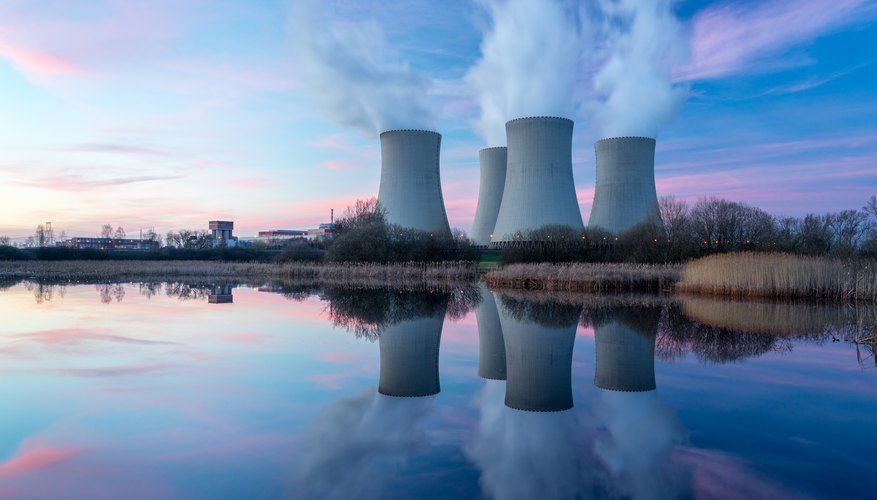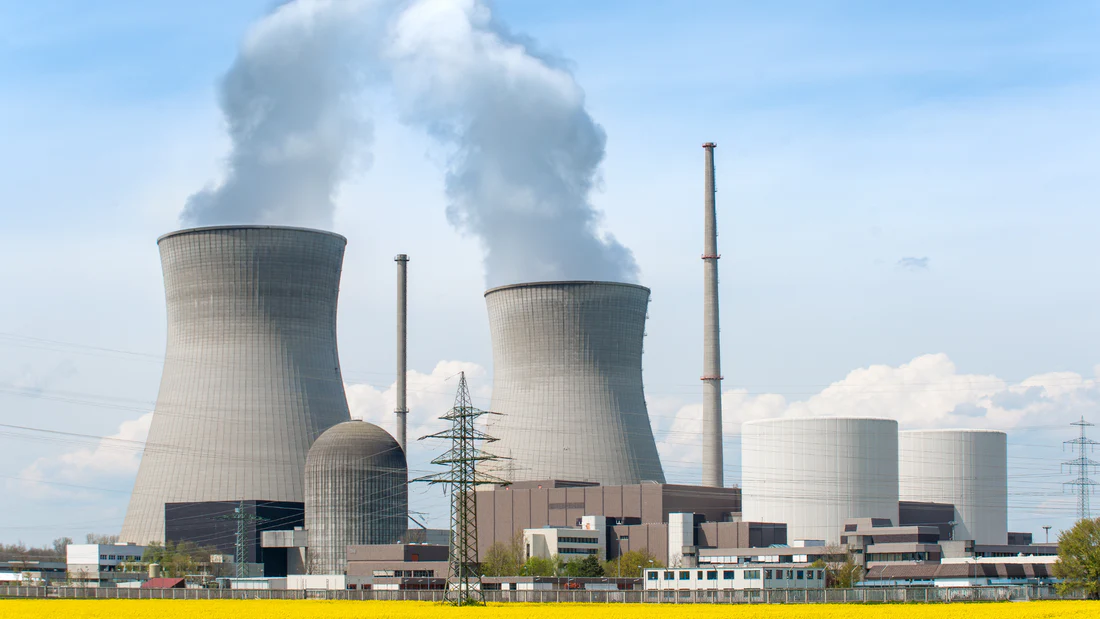Nuclear energy provides carbon-free power that helps curb greenhouse gas emissions.
Nuclear power has long been a controversial source of energy, with ongoing debates about its environmental impact.
This article explores the key facts to determine if nuclear energy is ultimately good or bad for the environment.
Is Nuclear Energy Bad for the Environment?
No, nuclear energy is not ultimately bad for the environment when managed responsibly and used alongside renewable energy sources.
The climate protection benefits of nuclear’s abundant carbon-free electricity production outweigh the potential risks and downsides.
Key Points
- Nuclear power currently provides around 20% of U.S. electricity without direct greenhouse gas emissions.
- Major nuclear accidents like Chernobyl and Fukushima demonstrated the potential for catastrophic environmental contamination.
- High costs limit the expansion of nuclear power plants, even though increased nuclear capacity could significantly reduce emissions.
How Nuclear Power Plants Work
Nuclear power plants generate electricity through nuclear fission, where atoms split apart and release energy.
This occurs inside the reactor core, which contains fuel rods made of enriched uranium pellets.
The enormous amount of heat produced turns water into steam to spin turbines.
After passing through the turbine, the steam condenses back to water and gets recycled through the plant.
Nuclear plants require significant water resources for cooling.
Most facilities use “once-through” systems that draw water from rivers, lakes, or oceans.
The water gets returned at a warmer temperature, resulting in thermal pollution that can harm marine ecosystems.
The Upside: Nuclear Energy Has Clear Environmental Benefits
Nuclear Produces Large Amounts of Carbon-Free Electricity
Nuclear power currently provides about 20% of all U.S. electricity.
Nuclear reactors operate without burning fossil fuels, meaning they don’t directly emit greenhouse gases during electricity generation.
Even when considering its full life-cycle emissions from mining, enrichment, plant construction, and waste disposal, nuclear energy has among the lowest carbon emissions per unit of electricity generated compared to fossil fuels.
It produces about the same emissions as wind and one-tenth the emissions of coal-fired plants.
Nuclear Protects Air Quality
In addition to being virtually greenhouse gas-free, nuclear energy doesn’t produce air pollutants like nitrogen, sulfur dioxides, and particulate matter that are associated with burning coal and natural gas.
By generating electricity through nuclear fission instead of fossil fuel combustion, nuclear power protects air quality.
Land Usage Is Lower Than Renewables
Nuclear has a relatively small physical footprint and land requirements.
A typical 1,000-megawatt nuclear facility in the U.S. needs a little over 1 square mile of space.
In comparison, a utility-scale solar farm would require around 75 times more land to produce the same amount of electricity.
The Downside: Nuclear Poses Environmental Risks
Radioactive Waste Remains Dangerous for Thousands of Years
While nuclear waste only accounts for 3% of total U.S. commercial radioactive waste by volume, it contains over 95% of all radioactivity generated.
Used nuclear fuel is thermally hot as well as radioactive and requires constant cooling and isolation from humans and the environment.
We still lack a permanent disposal site for nuclear waste, leaving it in temporary storage.
The risk of radioactive leaks is low but would have catastrophic environmental consequences.
Meltdowns and Accidents Can’t Be Ruled Out
Nuclear disasters are rare, but major incidents demonstrate the potential for catastrophic environmental contamination.
The 1986 Chernobyl accident forced the evacuation of a 30-kilometer area and caused widespread radiation sickness and cancer among nearby populations.
In 2011, an earthquake and tsunami damaged Japan’s Fukushima plant, causing the meltdown of three nuclear reactors.
Safety systems aimed to prevent accidents have improved but human error and natural disasters mean risk cannot be eliminated.
Uranium Mining Has Environmental Consequences
Uranium mining disturbs land and generates waste called “tailings” that contain radioactive elements.
Tailings require isolation from the environment to avoid air and water contamination.
While uranium accounts for only 0.1% of nuclear power’s total lifecycle emissions, mining, and enrichment processes have local environmental impacts that disproportionately affect indigenous communities.
High Costs Limit Adoption of Nuclear Technology
New nuclear power costs about 5 times more per megawatt hour than onshore wind and solar.
High upfront costs limit the expansion of commercial nuclear power plants.
If nuclear-replaced coal, it could significantly reduce emissions.
But the high price tag makes that transition economically impractical without subsidies.
The cost has also hindered innovation that could make nuclear safer and less wasteful.
Is Nuclear Energy Better or Worse for the Environment?
There is an ongoing debate about whether nuclear energy is ultimately better or worse for the environment compared to other electricity sources like coal, natural gas, and renewables.
On one hand, nuclear plants generate power without emitting air pollution or carbon emissions during operation.
Nuclear energy has prevented an estimated 60 billion tons of carbon emissions globally by displacing fossil fuels.
However, mining, enriching, and transporting uranium also has environmental impacts.
There are also concerns around radioactive waste storage, the potential for accidents, and decommissioning impacts that make nuclear power a continued source of controversy among environmental advocates.
Ultimately, nuclear energy is preferable for the environment compared to fossil fuels like coal and natural gas, which release significant amounts of planet-warming greenhouse gases.
However, renewable sources like wind, solar, and hydropower are considered more eco-friendly than nuclear overall due to lower waste generation and decommissioning impacts.
The ideal scenario for the climate is likely utilizing a mix of nuclear and renewables together to ensure steady, carbon-free electricity production.
Is Nuclear Energy Bad for Global Warming?
No, nuclear power does not contribute to global warming.
Nuclear energy has among the lowest life-cycle greenhouse gas emissions per unit of electricity generated compared to any other source.
Nuclear power plants emit no carbon dioxide during operation.
Nuclear generation avoids the emission of an estimated 60 billion tons of carbon dioxide per year globally.
If nuclear were phased out, utilities would likely turn to coal or natural gas.
Either would significantly increase emissions.
Some argue that nuclear power distracts from the transition to renewables needed to address climate change.
However, utilizing all low-carbon energy sources available will facilitate broader fossil fuel displacement.
Renewables face challenges with intermittent generation.
Pairing nuclear’s steady baseload power with renewables can ensure grid reliability as clean energy expands.
Most climate mitigation scenarios see nuclear generation increasing to curb greenhouse gas emissions and limit global temperature rise.
How Does Nuclear Energy Affect Aquatic Ecosystems?
Nuclear power plants rely on access to large, steady sources of water for cooling.
Most facilities utilize “once-through” systems, which withdraw billions of gallons of water daily from oceans, rivers, or lakes.
After cycling through the plant, the warmed water gets discharged back to the source.
The temperature increase, typically around 10 to 20°F, causes thermal pollution that can harm marine ecosystems.
Warm water alters habitat and stresses cold water-adapted species like salmon and trout.
Warm water discharge also limits dissolved oxygen levels, causing hazards for fish, invertebrates, and algae.
Chemical biocides added to cooling water can accumulate in sediments and have toxic effects on aquatic organisms.
Some modern nuclear reactors utilize closed-loop cooling to reduce ecosystem impacts.
But once-through cooling is still common, and expansion of nuclear would increase demands on water resources.
Careful siting of plants and the use of cooling towers can help mitigate aquatic ecology impacts.
The Bottom Line: Is Nuclear Energy Bad for the Environment?
Nuclear power generates abundant carbon-free electricity, which offers clear climate benefits.
However, we must weigh those advantages against safety risks, radioactive waste hazards, and uranium mining impacts.
There are also economic constraints on the viability of nuclear energy.
Ultimately, the ideal energy portfolio likely includes nuclear along with renewables like solar and wind.
Committing to nuclear while also aggressively ramping up renewable energy offers the most pragmatic path to a low-carbon future.
We should continue innovating nuclear technology to enhance reactor safety and reduce waste.
Though not perfect, nuclear provides valuable climate protection that outweighs its potential downsides.
In summary, nuclear power has advantages and drawbacks when it comes to environmental impact.
With responsible management, innovation and use alongside renewables, nuclear energy can provide safe, clean electricity essential for mitigating climate change.
Frequently Asked Questions
How does nuclear energy affect climate change?
Nuclear power plants produce electricity without emitting greenhouse gases, so utilizing nuclear energy helps mitigate climate change. Nuclear accounts for 55% of all U.S. low-carbon electricity. However, high costs have hindered the larger-scale adoption of nuclear energy to displace fossil fuels.
What is the most environmentally friendly energy source?
Renewable energy sources like solar, wind, and hydropower are considered the most eco-friendly options because they produce electricity with minimal environmental impact. However, renewables rely on intermittent resources, so pairing them with nuclear provides steady, carbon-free power.
Is nuclear waste stored safely?
There is no permanent storage site for nuclear waste in the U.S. Currently, waste is kept in temporary storage facilities where it is actively cooled to prevent radiation leaks. Developing a permanent deep geological repository would better isolate radioactive waste and limit environmental risk.
How does uranium mining impact the environment?
Uranium mining disturbs land and generates radioactive waste tailings. Tailings contain toxins and must be kept isolated from air and water to prevent contamination. Uranium mining also disproportionately affects indigenous populations.
At GreenChiCafe, we are passionate about the environment and our natural world. Please check out our website for more content about going green and living sustainably.

Annie is a passionate environmental writer and activist. She has been writing about sustainability, conservation, and green living for over 15+ years. Annie is dedicated to raising awareness about environmental issues and providing practical tips for living an eco-friendly lifestyle. When she’s not writing, you can find her volunteering with local environmental organizations, teaching workshops on zero waste living, or exploring nature. Feel free to get in touch with Annie: annie@greenchicafe.com


